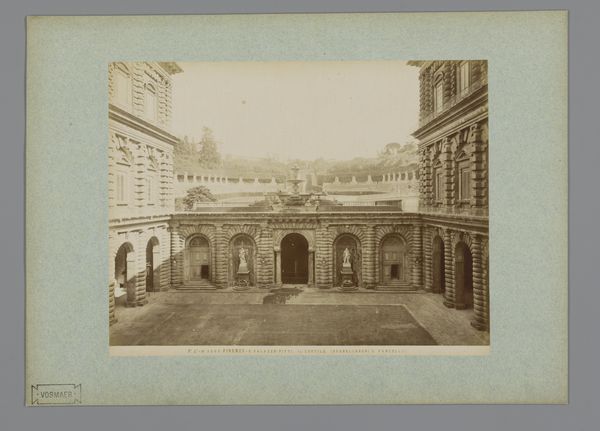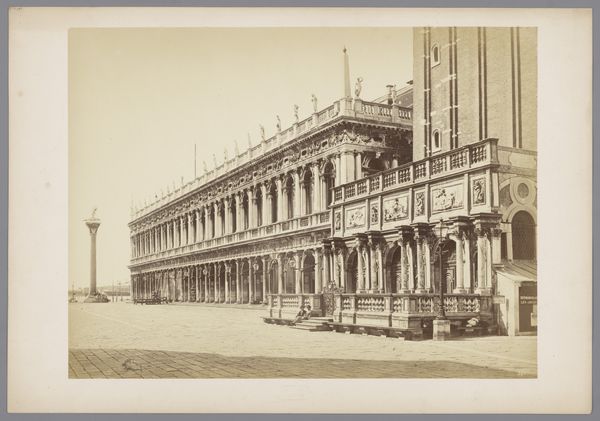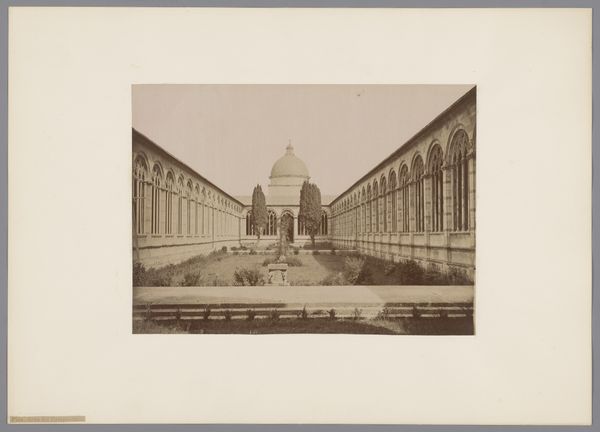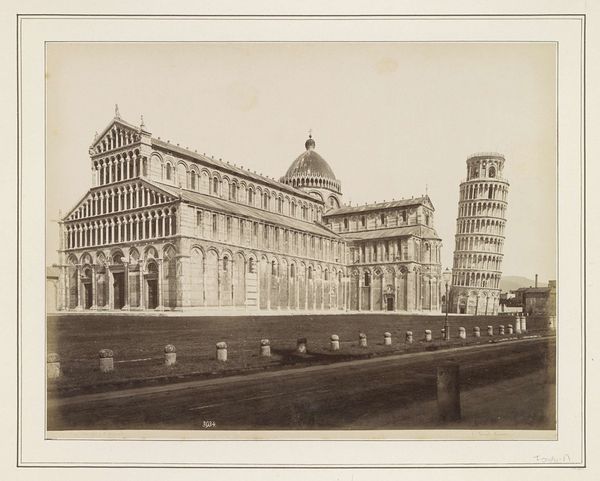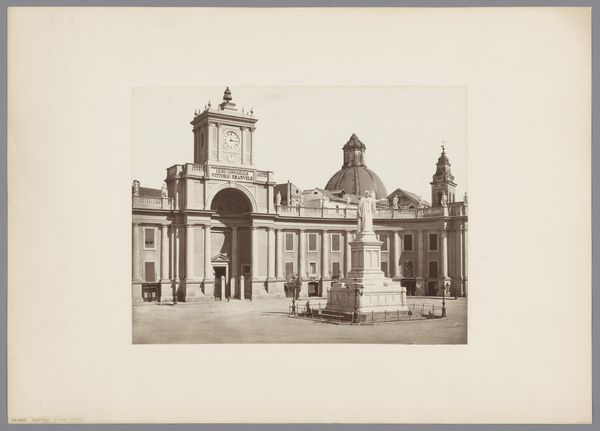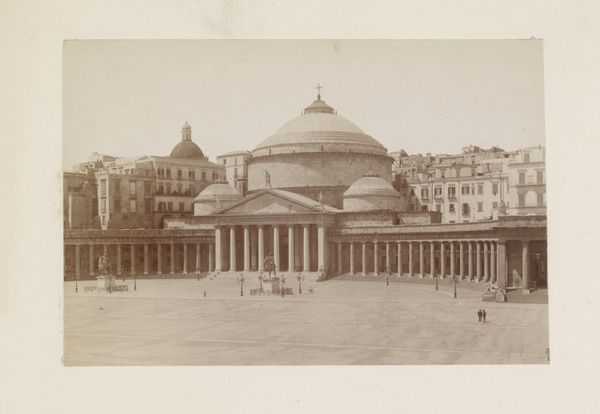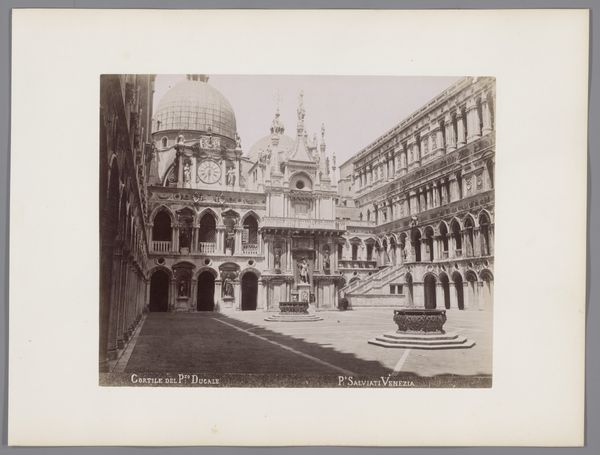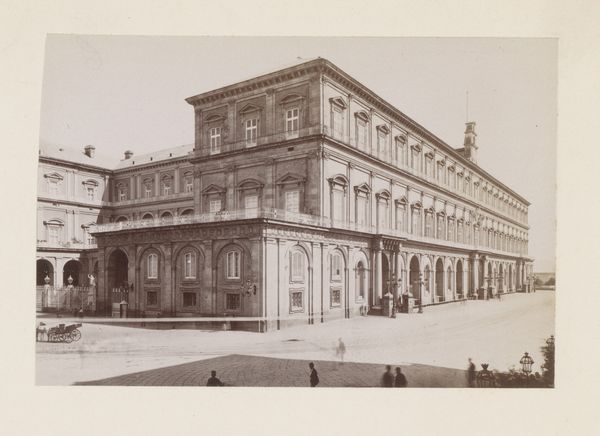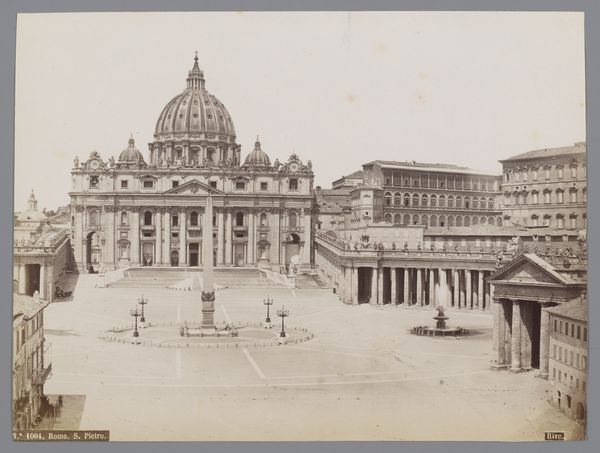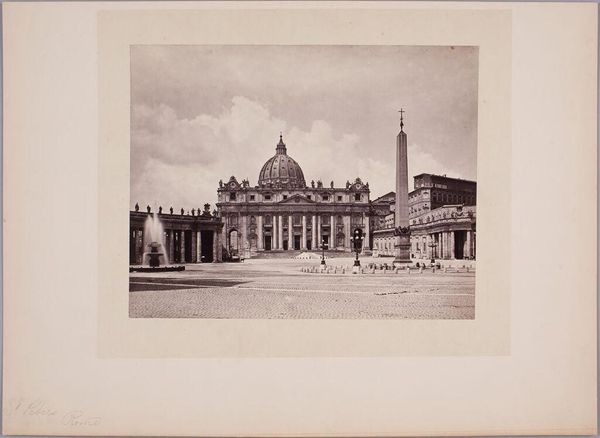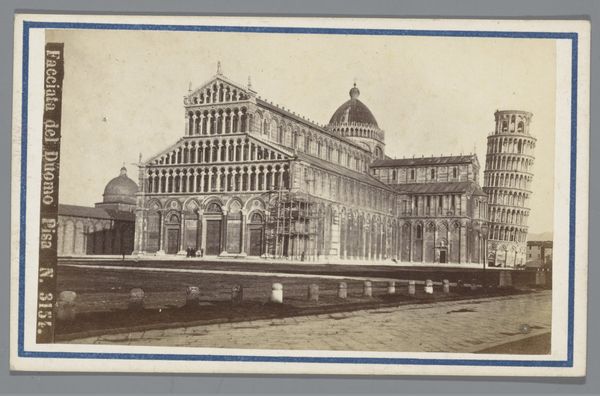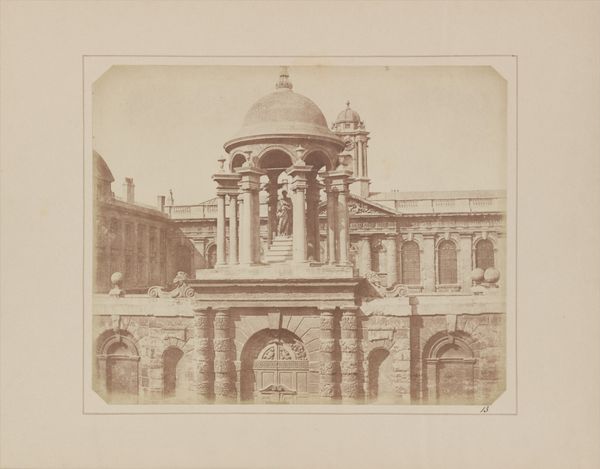
print, photography, architecture
# print
#
landscape
#
etching
#
photography
#
cityscape
#
italian-renaissance
#
architecture
#
realism
Dimensions: height 200 mm, width 255 mm
Copyright: Rijks Museum: Open Domain
Giacomo Brogi created this albumen print of the Cathedral of Pisa in Italy, sometime in the 19th century. It is an image of power, both sacred and secular. The cathedral looms large, a testament to Pisa's historical wealth and influence as a maritime republic. The image’s visual codes create meaning through cultural references and historical associations. Brogi’s Italy was one of stark social contrasts, deeply religious and yet also seeing the rise of secular ideologies. This tension is visible in the photograph itself. We see the grand architecture of the church but also small figures of common people walking by. How might we understand the public role of art here? Photography was relatively new and was seen as documentary. Brogi’s photo freezes a moment in time but also presents an idea. Pisa and its cathedral represent a cultural touchstone but also a place in the world, as it was. Art history is a vital tool to understand the social conditions that shape artistic production. By exploring the archives of photography, architectural history, and religious institutions, we can better understand the complex meaning of this powerful image.
Comments
No comments
Be the first to comment and join the conversation on the ultimate creative platform.

